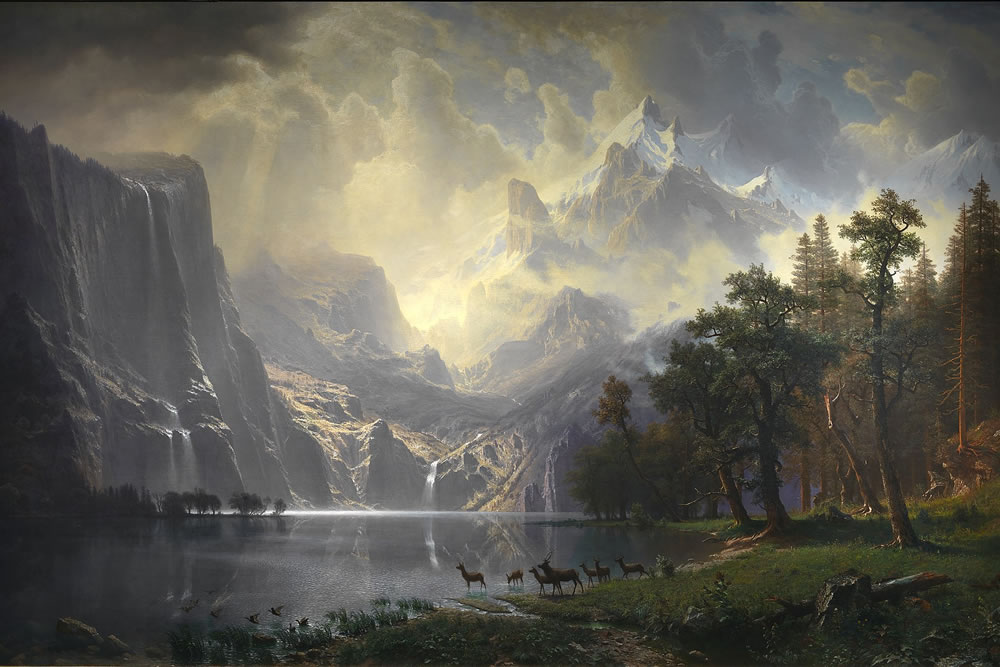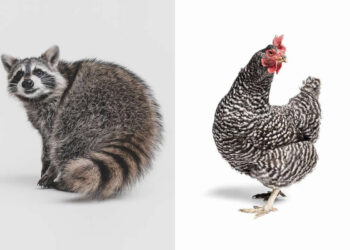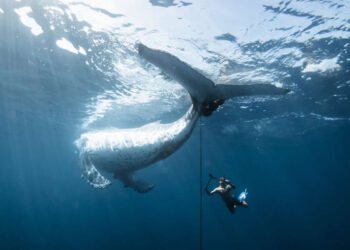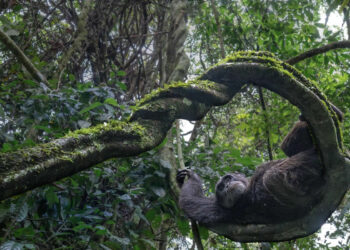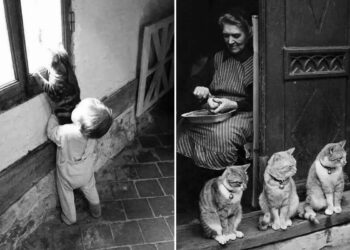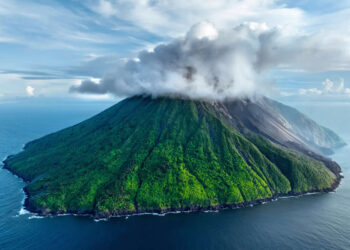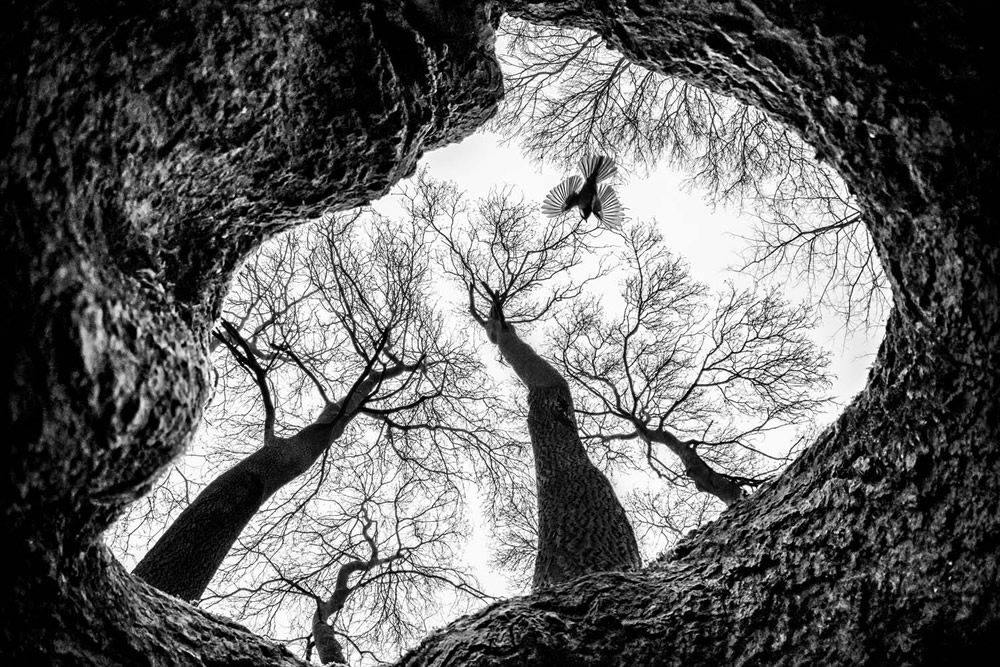In the realm of landscape painting, artists endeavor to freeze moments in time, fleeting and transient, inviting viewers to relish the scenery. The creative process enables the blending of reality and imagination, birthing paintings that feel almost otherworldly. These artistic expressions become a unique lens through which we perceive the world, offering an alternative viewpoint that transcends our own.
Landscape paintings, with their surreal qualities, weave tales that extend beyond the visible spectrum. They may feature not only the untouched beauty of nature but also the imprint of humanity — man-made structures, solitary figures, or entwined lovers. The most revered landscape masterpieces seamlessly fuse these diverse elements into harmonious compositions, proving that within a single canvas, an entire world can unfold, rich with stories waiting to be explored.
#1. The Great Wave Off Kanagawa by Katsushika Hokusai (1831)
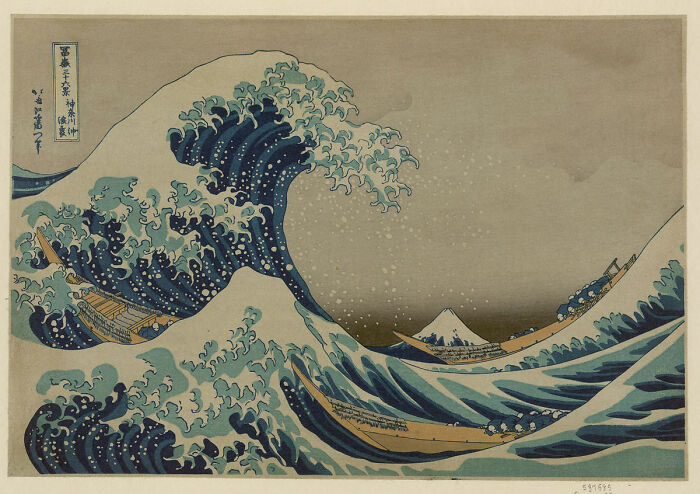
Source: Wikipedia
The Great Wave Off Kanagawa might be one of the most famous Japanese paintings, which has a following even in the western hemisphere. It shows how huge waves are about to crash into some fishermen and their boats. In the background, the mountain Fuji is peaking out and acts like a northern star.
#2. Looking Down Yosemite Valley, California by Albert Bierstadt (1865)
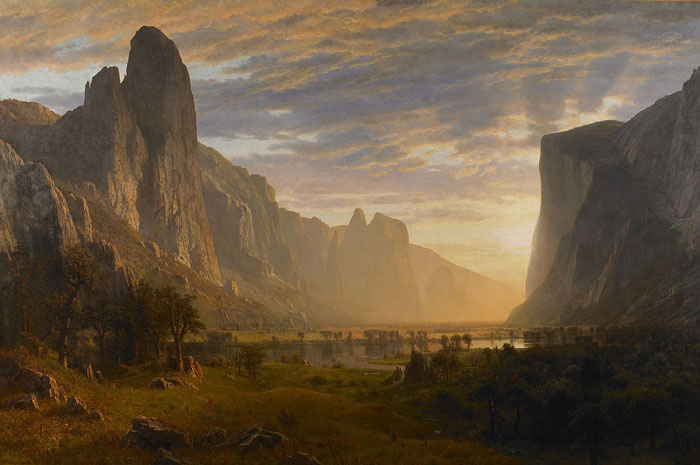
Source: Wikipedia
It was Bierstadt’s first substantial depiction of Yosemite, a subject for which he would later gain notoriety. It offers a glimpse of one of America’s most picturesque locations. Based on sketches he did in 1863, Bierstadt depicted the valley from a viewpoint above the Merced River, gazing west with Sentinel Rock and El Capitan enclosing the view on the right and left, respectively. In the distance, Middle Cathedral Rock’s spire may be seen.
#3. The Starry Night by Vincent Willem van Gogh (1889)
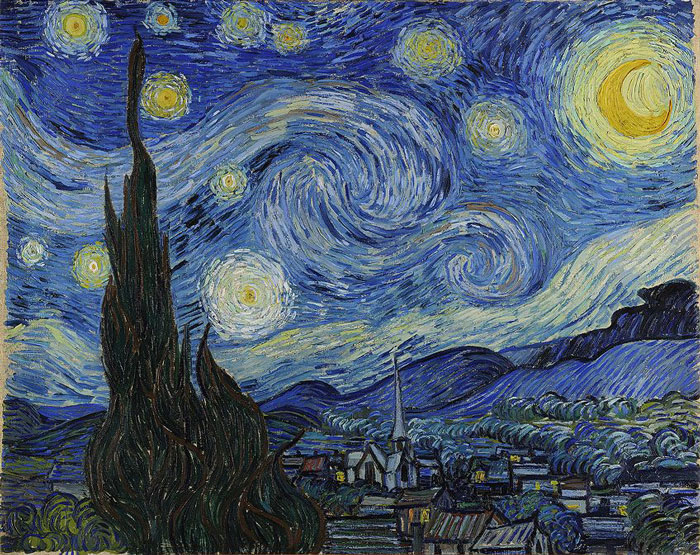
Source: Wikipedia
The night sky, packed with stars and the moon, takes up most of this medium-sized oil painting on canvas. It occupies three-quarters of the picture plane and is characterized by strongly swirling patterns that seem to wash across its surface like waves. It also appears tumultuous, almost agitated. It is encircled by concentric circles of radiant white and yellow light and is pocked with luminous orbs, including the crescent moon to the far right and Venus, the morning star, to the left of the center.
#4. The Magpie by Claude Monet (1869)
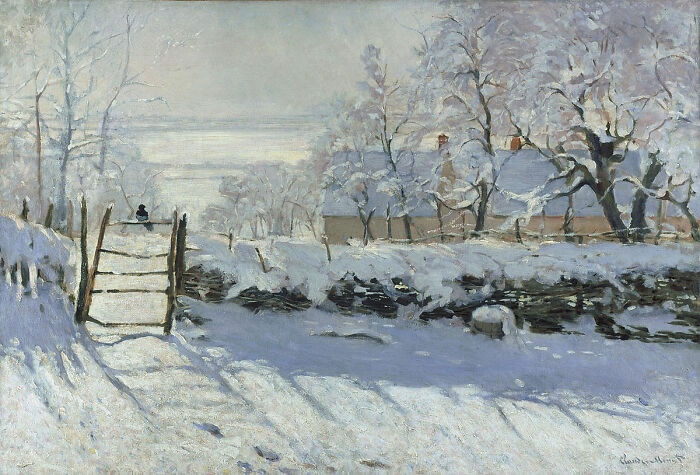
Source: Wikipedia
The Magpie’s canvas shows a lone black magpie perched on a gate fashioned from a wattle fence as the sunbeams touch newly fallen snow, casting blue shadows. One of Monet’s earliest uses of colored shadows, which subsequently came to be linked with the Impressionist movement, may be seen in this picture.
#5. Among The Sierra Nevada Mountains by Albert Bierstadt (1868)
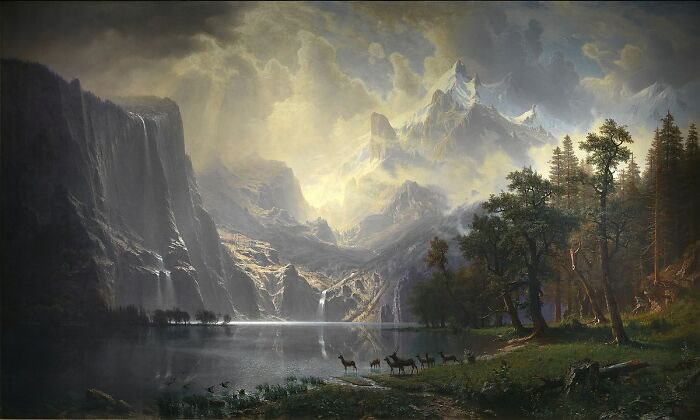
Source: Wikipedia
The painting features craggy mountains on the left and a luminous sky with the Sun’s rays peeping through the clouds in the background. On the right side of the painting, there is a peaceful lake with a group of deer and waterfowl on the edge of a mountain. If you have a careful eye, you might have spotted a trout in the water on the left, in the shade of a rock.
#6. Starry Night On The Rhone by Vincent Willem Van Gogh (1888)
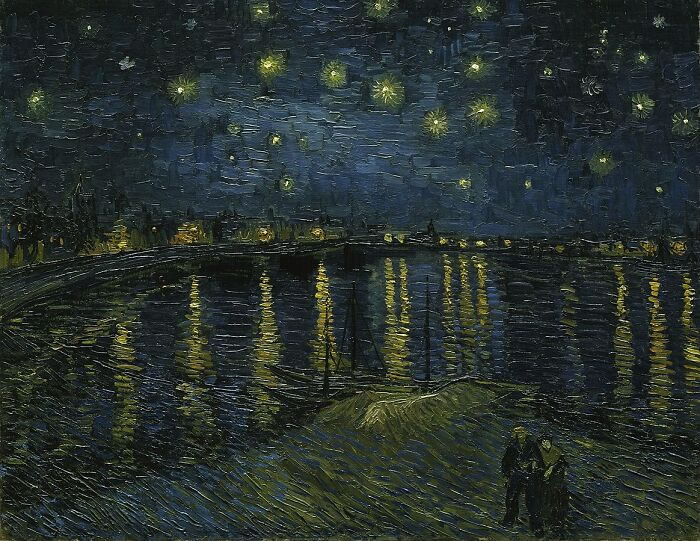
Source: Wikipedia
Van Gogh painted Starry Night Over the Rhone on the bank of the Rhône, which was just a short distance from the Yellow House on the Place Lamartine, where he resided. Some of his more well-known works, notably The Starry Night, the most well-known Van Gogh painting of night stars, were inspired by the night sky and the effects of lighting.
#7. Water Lilies by Claude Monet (1906)
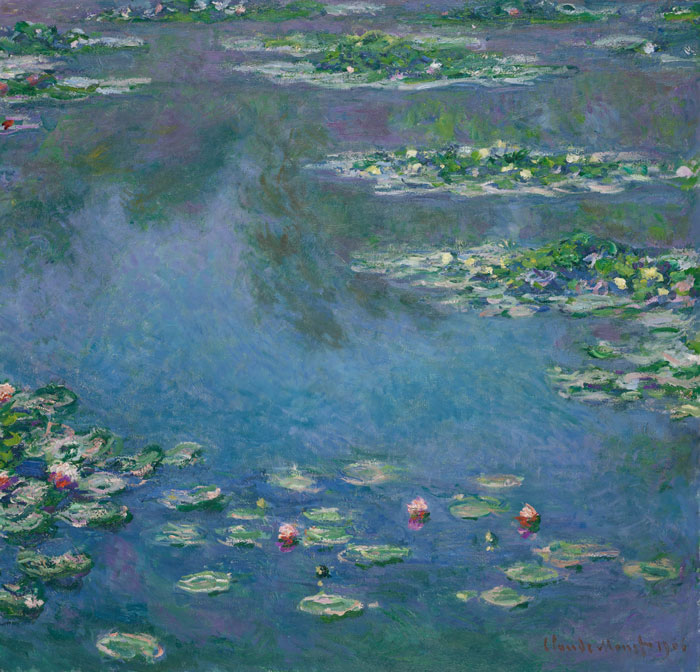
Source: Wikipedia
Claude Monet had completely abandoned the horizon line by the time he created Water Lilies. The artist glanced down, concentrating just on the pond’s surface with its cluster of vegetation floating in the reflection of sky and trees, in this spatially ambiguous work. Monet produced the representation of a horizontal surface on a vertical one.
#8. Sunlight And Shadow: The Newbury Marshes by Martin Johnson Heade (1875)
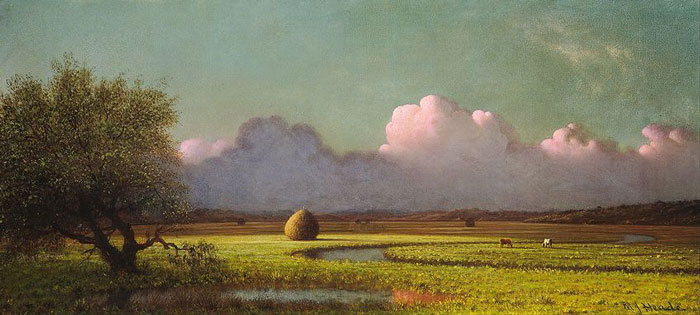
Source: Wikipedia
Sunlight and Shadow painting tries to engulf its viewer with some beautiful shots of nature. Every small detail adds up to make a wonderful landscape — the creek coming from the right to the middle of the painting, the pinkish clouds above, the trees, and the haybales. But the most important part is played by the sunlight and shadows, opposite things that work perfectly together.
#9. The Embarkation Of The Queen Of Sheba by Claude Lorrain (1648)
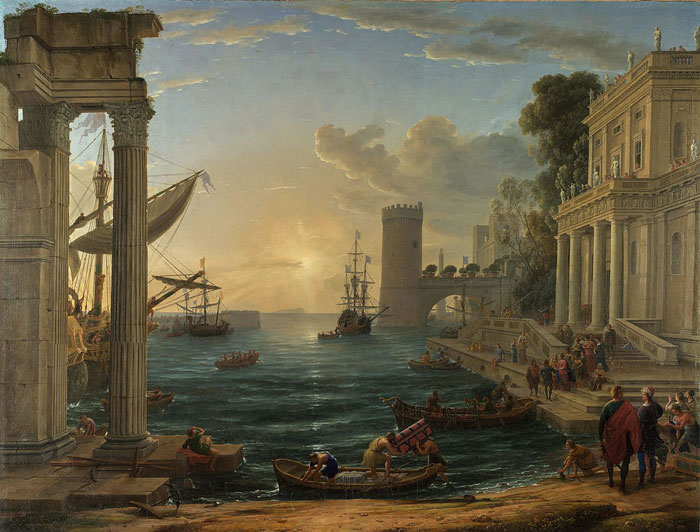
Source: Wikipedia
The painting’s approximately two-meter width and one-and-a-half-meter height gave Claude Lorrain plenty of room to develop the theme he chose for it. He avoided over-detailing the canvas and let the sky take up half of the space. Although there are a few clouds to our right, the sky is largely clear.
#10. Cafe Terrace At Night by Vincent Willem Van Gogh (1888)
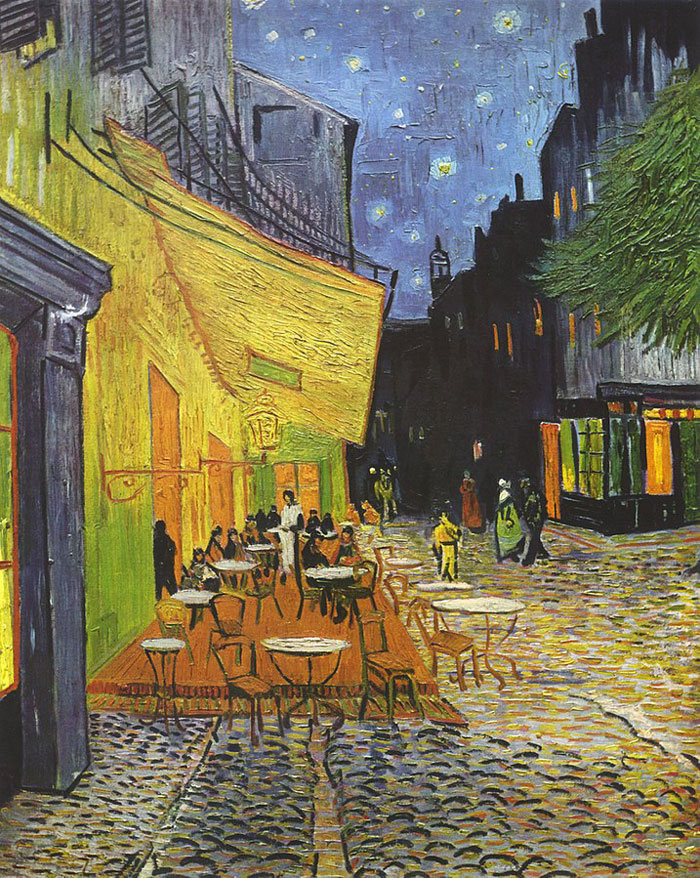
Source: Wikipedia
Vincent Willem Van Gogh hit the art world with another big painting. Named Cafe Terrace At Night, this painting perfectly captures the movement of Post-Impressionism. Soon, Van Gogh started to insert his unique “night effects” into more of his works. Revealed in 1888, the “night effect” became an iconic Van Gogh addition.
#11. The Japanese Footbridge And The Water Lily Pool by Claude Monet (1899)
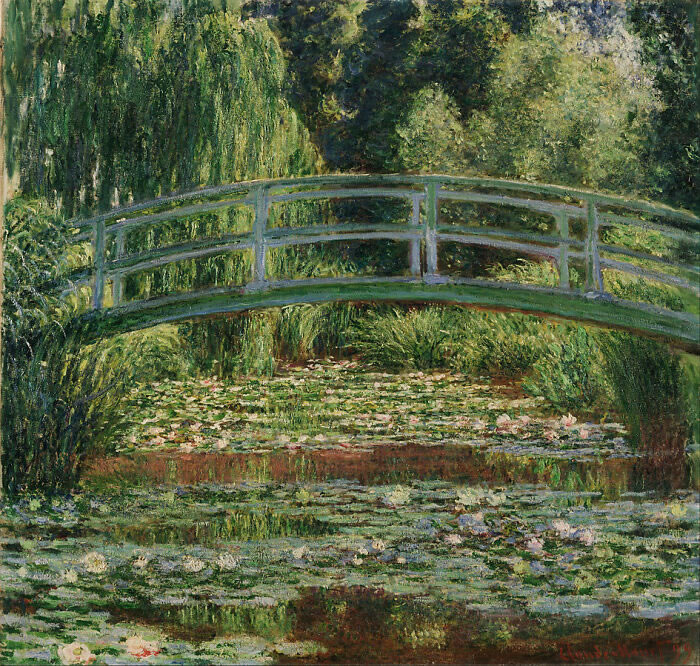
Source: Wikipedia
The water lily’s green leaves are dispersed around the pond and may be seen floating on top of the water. The huge flowers of the water lilies, which are blooming in abundance, protrude from the water. Although the flowers are primarily white, Monet gives them a few glimpses of other colors, including blue, pink, red, and yellow.
#12. Travelers Among Mountains And Streams by Fan Kuan (1000)
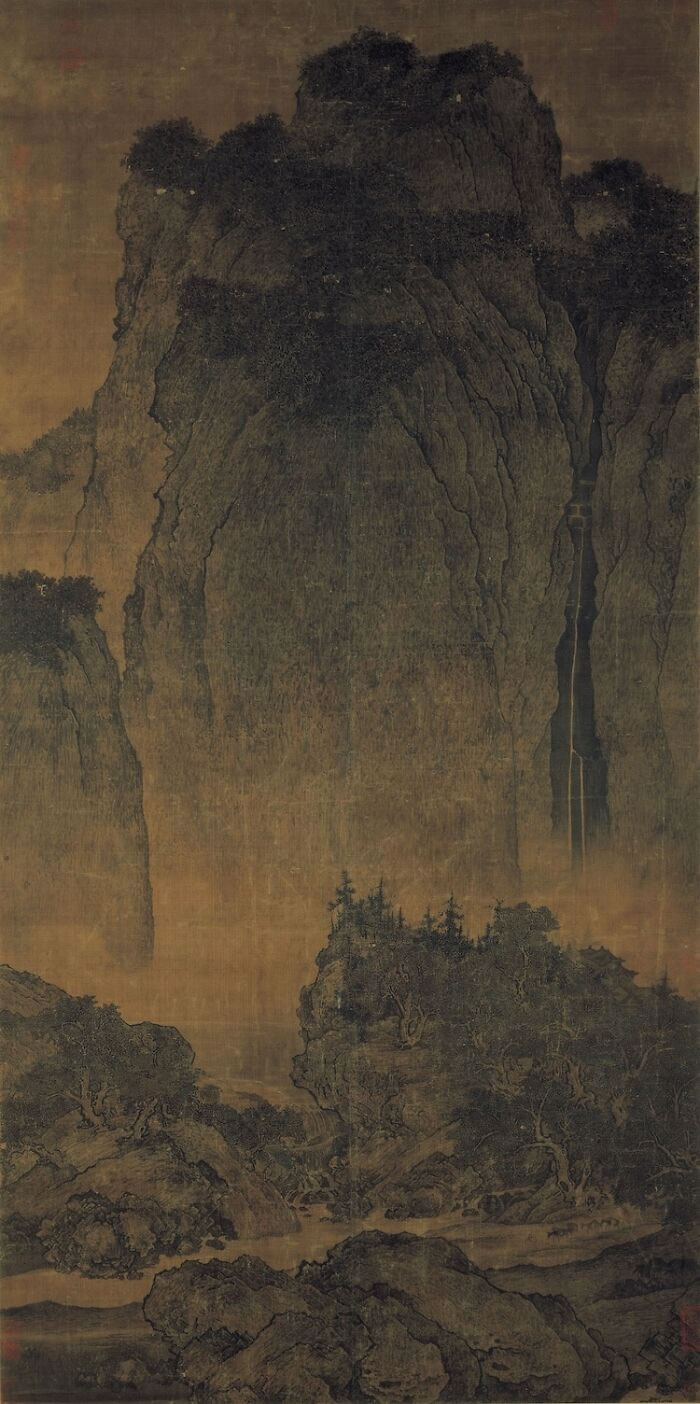
Source: Wikipedia
The gigantic landscape picture Travelers among Mountains and Streams establishes a standard to which later painters would frequently look for inspiration. Fan Kuan used angular contour strokes to depict the mountains and slopes and raindrop-like brush dabs to fill them in, emphasizing their majestic and timeless characteristics.
#13. Irises by Vincent Willem Van Gogh (1889)
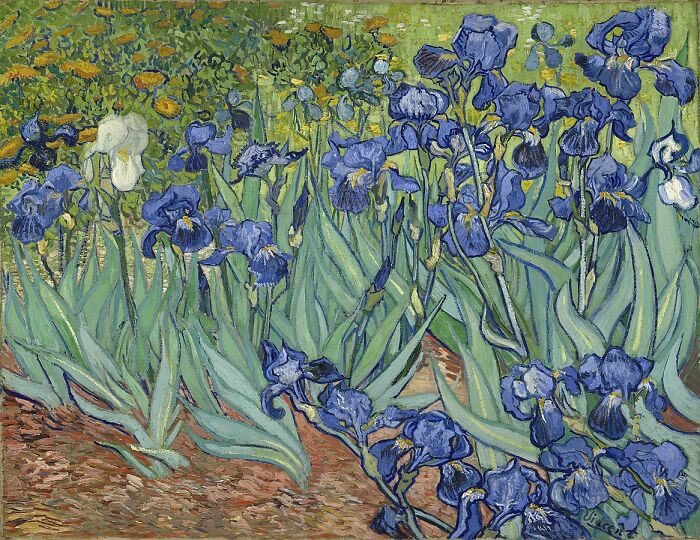
Source: Wikipedia
This is the first painting that Vincent Van Gogh did during his stay in the mental asylum. Irises, as the name might give out, is about irises, but painted ones. There are a lot of colors in this painting, and all of them seem to harmonize together. While the blue and green colors dominate the landscape, hints of yellow and white complete this masterpiece.
#14. The Sea Of Ice by Caspar David Friedrich (1824)
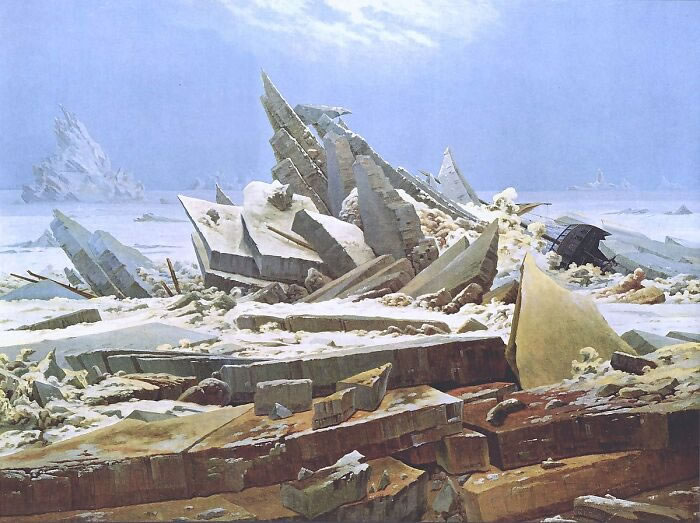
Source: Wikipedia
One of the greatest Friedrich works, it was regarded with confusion because of its unconventional subject matter and radical composition. According to Friedrich, the Arctic appears like a sea of ice, hence the name of the painting. Small icebergs are stacked on top of one another in the painting’s foreground, giving them the appearance of steps. The icebergs, however, are mashed together to create a tower of ice in the background.
#15 View Of Haarlem With Bleaching Fields by Jacob Van Ruisdael (1670)
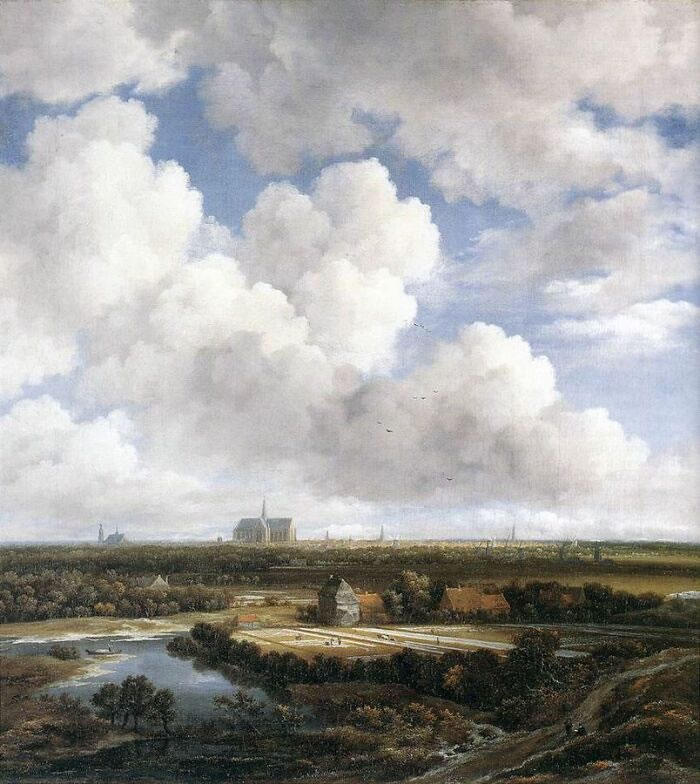
Source: Wikipedia
Van Ruisdael was able to catch the essence of the Dutch landscape in this painting. We stare out across the flat plain toward the distant city of Haarlem from a high dune. There is a vast sky above the city with passing clouds. In his painting, Van Ruisdael depicts the sun as it moves from one area of light to another. From the fields where linen is stretched out to bleach to Saint Bavo’s Church in the distance, he draws our eyes deep into the painting along the patches of sunshine.
#16. The Hunters In The Snow by Pieter Bruegel the Elder (1565)
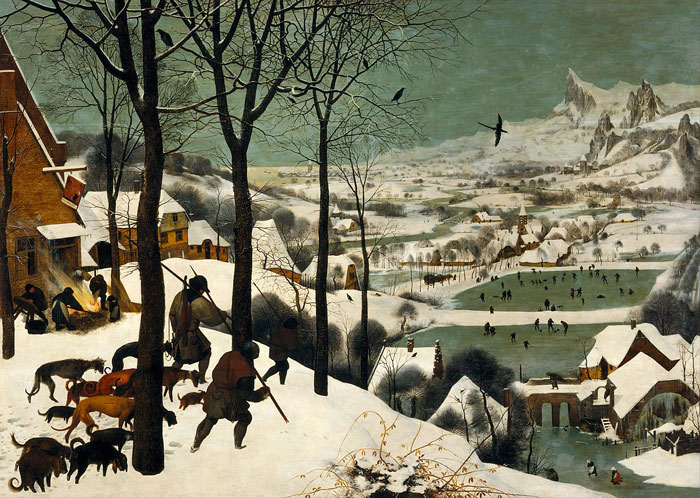
Source: Wikipedia
A calm, chilly day with gloomy skies is what one sees when looking at the painting. The trees are bare, the colors are subdued whites and grays, and there is a haze of wood smoke. An outside fire is used by several adults, a youngster, and an inn to prepare food. Flat-bottomed valleys with craggy peaks visible on the opposite side make up the landscape itself.
#17. Saint-Georges Majeur Au Crépuscule by Claude Monet (1908)
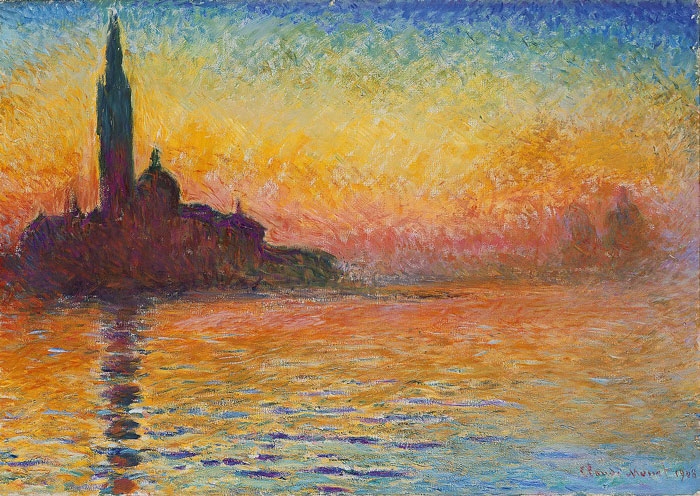
Source: Wikipedia
It shows enigmatic structures that seem to materialize out of thin air; they resemble floating objects in the backdrop. The forms are inserted lightly but not sufficiently to conceal their identity. The Church of San Giorgio Maggiore, with its bell tower rising to the top of the picture, is the main subject of the artwork. The Grand Canal’s mouth and Santa Maria Della Salute’s dimly lit domes are to the right.
#18. Wanderer Above The Sea Of Fog by Caspar David Friedrich (1817)
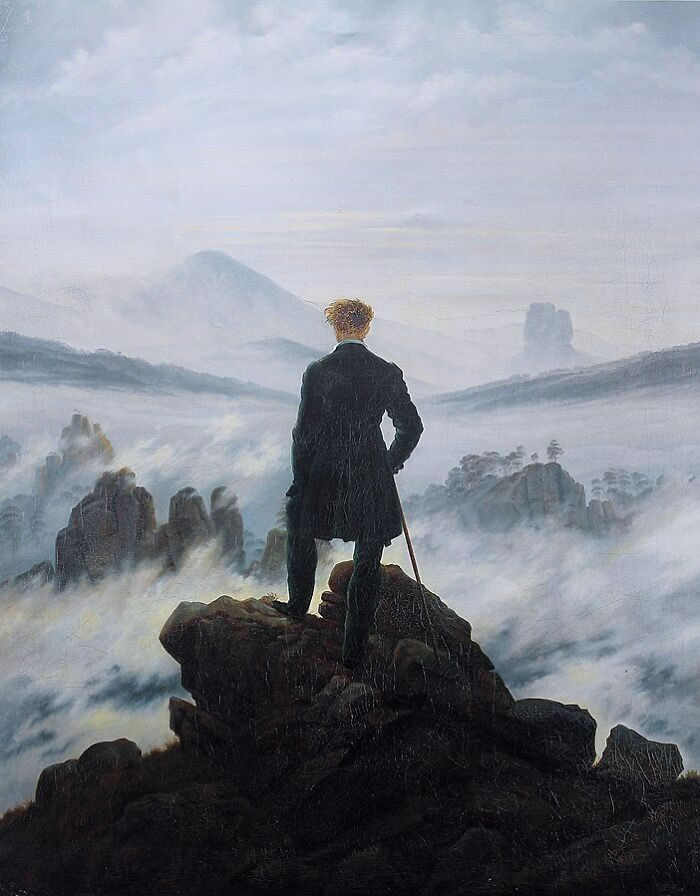
Source: Wikipedia
In the painting, a tall man is standing on a rocky ledge with his back to the spectator. He is holding a walking stick with his right hand while wearing a dark green overcoat. The wanderer looks out at a scene shrouded in a dense sea of fog, his hair blowing in the wind. Several further ridges protrude from the pile in the center, probably not dissimilar to those the traveler is standing on.
#19. Wivenhoe Park by John Constable (1816)
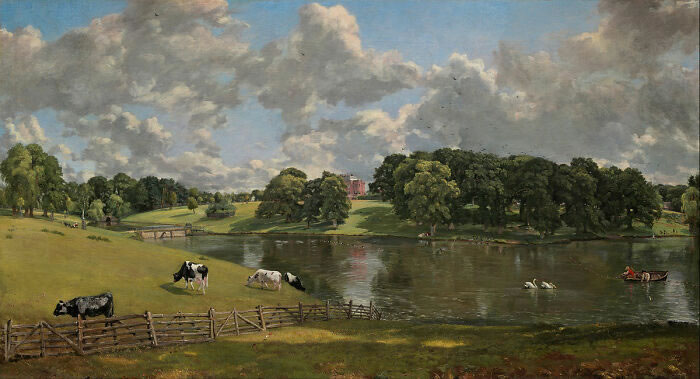
Source: Wikipedia
No one can capture the English natural beauty like John Constable does. This almost photographic-clear environment exudes a lovely sense of calm and harmony. The artist’s imaginative synthesis of the actual site is evident in the enormous sections of dazzling sunshine and cool shade, the rambling line of the fence, and the lovely balance of trees, meadows, and rivers.
#20. Olive Trees With Yellow Sky And Sun by Vincent Willem Van Gogh (1889)

Source: Wikipedia
Vincent Van Gogh wanted to depict the olive trees differently as a result of his opposition to the painting of Christ in the Olive Garden. He had learned during his stint at the asylum that olive trees were revered in Saint Remy, just as the willows were in his land, which is why he decided to work with them. Van Gogh’s legacy is portrayed in the picture of Olive Trees with a Yellow Sky and Sun, which is an undeniable masterpiece.
#21. The Hermitage At Pontoise by Camille Pissarro (1867)
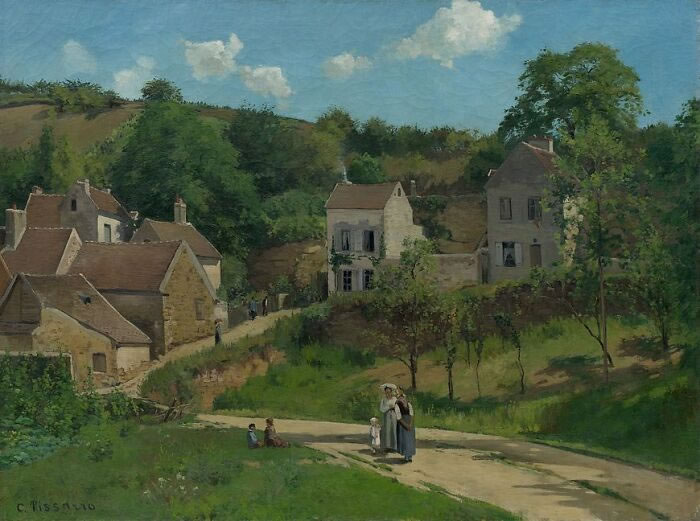
Source: Wikipedia
This image depicts the meandering village way at the foot of the Hermitage, a collection of homes in Pontoise, France, where the painter Camille Pissarro lived between 1866 and 1882. He selected the rural surroundings of the province capital for several large-scale landscapes that have been dubbed his early masterpieces.
#22. The Abbey In The Oakwood by Caspar David Friedrich (1810)
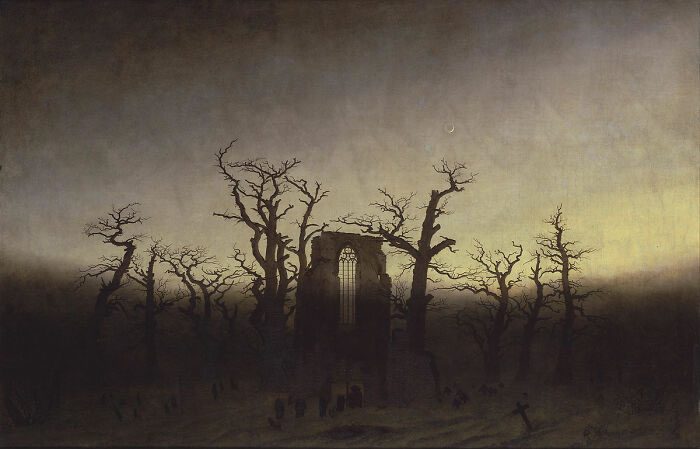
Source: Wikipedia
A historic abbey is depicted in the center of the painting by Friedrich. By showing people carrying a coffin toward the abbey, Friedrich is trying to evoke the sense of time passing. The idea is that no matter what we do, nature will always win, taking over the buildings and outliving the human race.
#23. Early Spring by Guo Xi (1072)
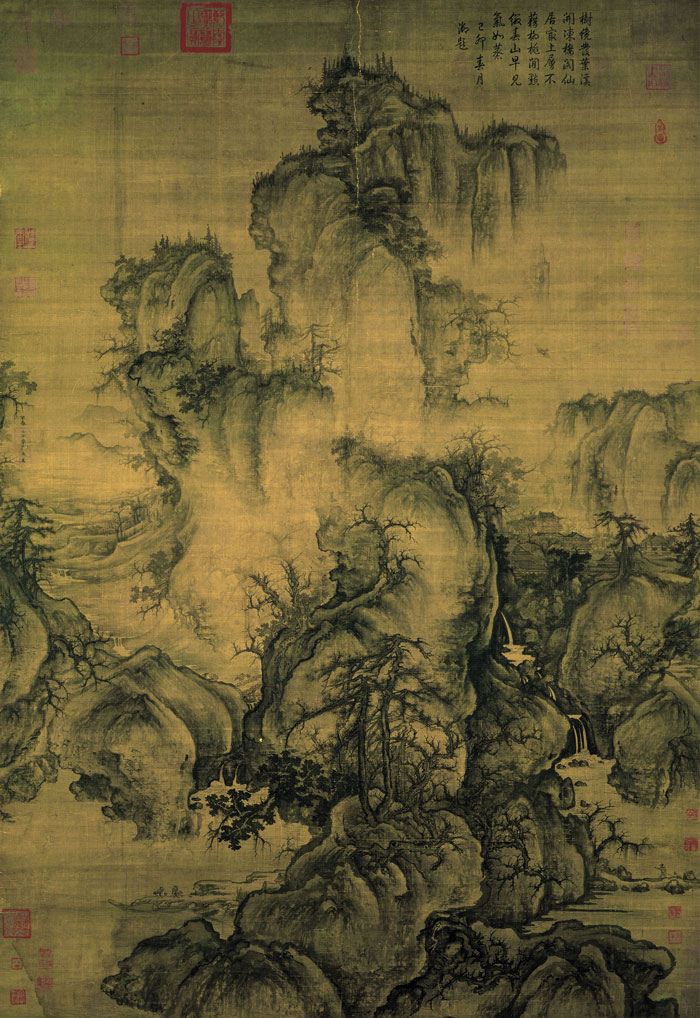
Source: Wikipedia
Early Spring shows Guo Xi’s creative methods for creating different viewpoints, which he dubbed “the angle of totality.” “Floating Perspective,” a technique that moves the viewer’s fixed eye and emphasizes the distinctions between Chinese and Western styles of spatial representation, is another name for this kind of visual representation. When it comes to painting, Guo Xi is frequently referred to as a “Northern Song master.”
#24. The Olive Trees by Vincent Willem Van Gogh (1889)
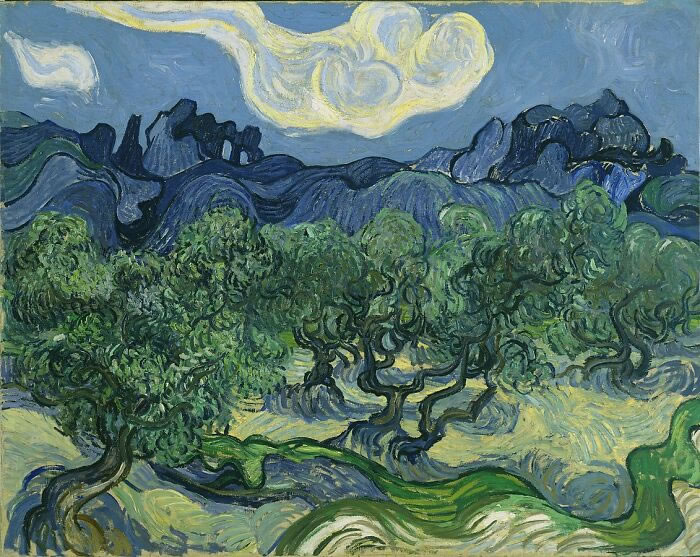
Source: Wikipedia
Van Gogh found the olive orchards near Saint-Rémy to be a rewarding subject. He tried to come up with a decent approach to depict the olive trees’ erratic growth. He came up with the idea of using wavy brushwork, strong outlines around the tree trunks, and stylized blue shadows.
#25. Wheat Field With Cypresses by Vincent Willem Van Gogh (1889)
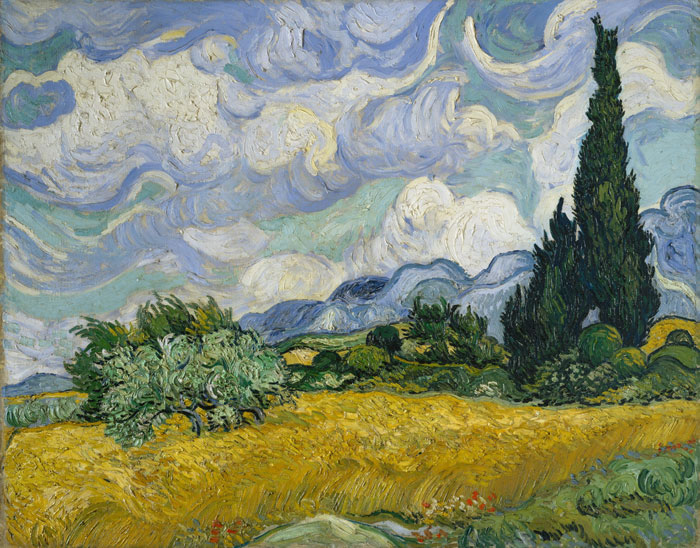
Source: Wikipedia
#26. The Ninth Wave by Ivan Aivazovsky (1850)
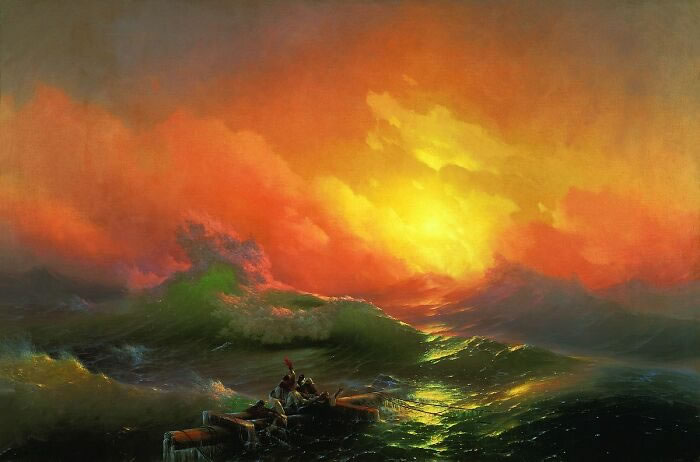
Source: Wikipedia
The Ninth Wave shows a sea after a night storm and individuals clinging to shipwreck debris in an attempt to save themselves from certain death. The debris, which is shaped like a cross, seems to be a Christian allegory for deliverance from sin on earth. Warm colors in the artwork lessen the sea’s ominous undertones, making it seem more likely that the humans would survive. Both the destructiveness and the beauty of nature are depicted in this painting.
#27. Kindred Spirits by Asher B. Durand (1849)
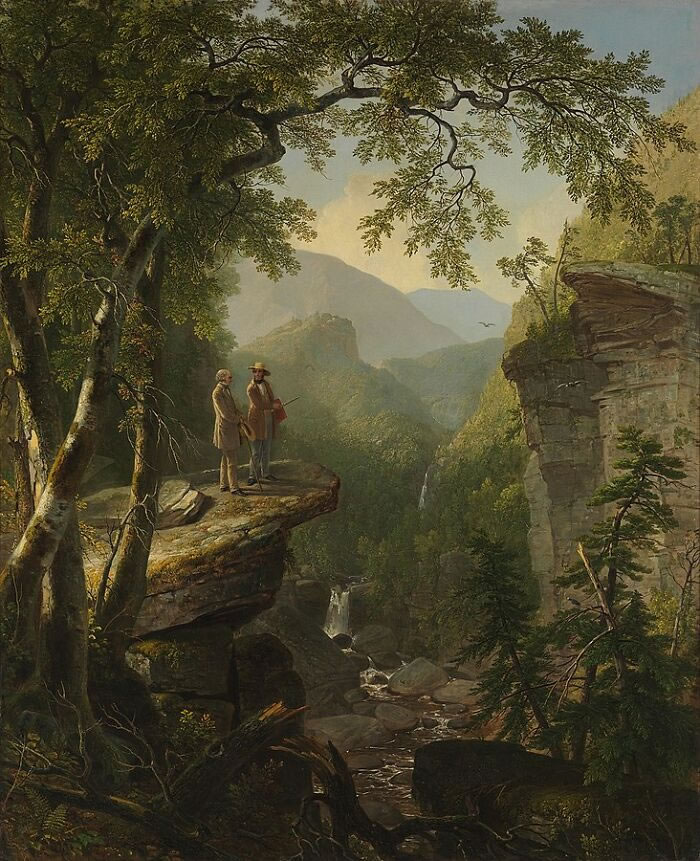
Source: Wikipedia
Kindred Spirits is fundamentally a piece of memory art. Cole and Bryant’s friend Durand portrayed his pals in a setting that both Cole and Bryant referenced in their artistic works. The picture depicts the idea of connecting with nature by combining two locations — Kaaterskill Falls and the Clove — in an idealized manner.
#28. View Of Toledo by El Greco (1600)
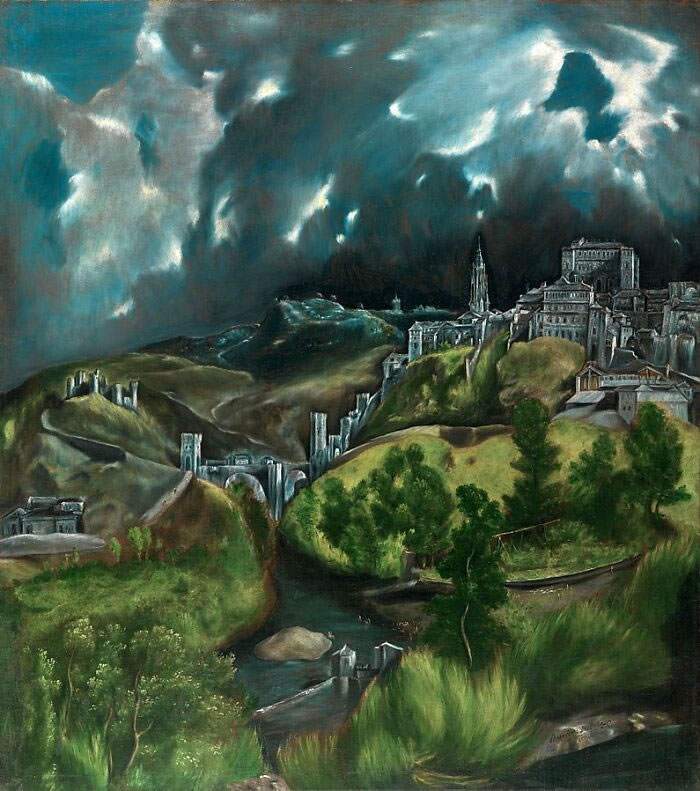
Source: Wikipedia
One of El Greco’s two surviving landscape paintings, together with View and Plan of Toledo, is titled View of Toledo. Black, white, and rich greens are among the painting’s strong colors. It is entirely earth tones. The stark color contrast between the deep blue of the heavens above and the vibrant green of the hills below is what stands out most. View of Toledo conveys to visitors an impression of Toledo’s gloom or moodiness. In the vicinity of the city, observers can see that the sky becomes unusually gloomy.
#29. The Oxbow by Thomas Cole (1836)
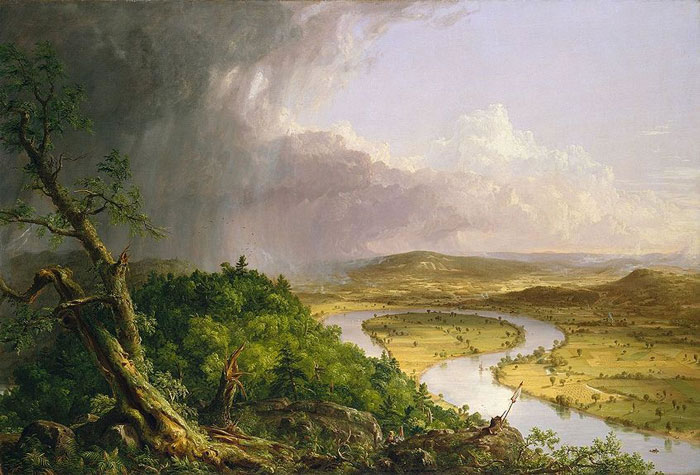
Source: Wikipedia
When looking at The Oxbow, the viewer can see that Cole divided the composition into two unequal parts by drawing a diagonal line from the lower right to the upper left. The painting’s left side features a breathtaking picture of the landscape that inspires sentiments of peril and even terror. The dark storm clouds that appear to be pouring rain on the nearby middle ground serve to emphasize this. This area of the picture shows a pristine landscape, God’s creation unaltered by man. It is untamed and wild.
#30. Wheatfield With Crows by Vincent Willem Van Gogh (1890)
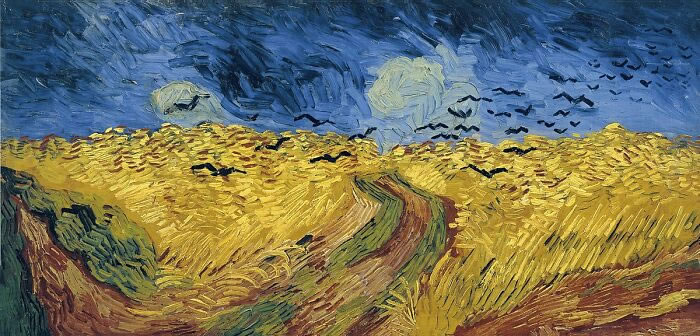
Source: Wikipedia
The most well-known of Van Gogh’s paintings might be Wheatfield with Crows, frequently said to be his final composition. Many believe that the ominous sky, the ravens, and the dead-end route represent his impending demise, but this is only a legend. He produced several other pieces following this one.
Related Articles:
- 30 Inspiring & Most Famous Paintings By Raja Ravi Varma
- Indian Artist Pramod Kurlekar Creates Beautiful Oil Paintings Of Portraits
- Artist Jeremy Miranda Creates Beautiful Acrylic Paintings Of Landscapes
- Artist Deanna Maree Paintings 100 Species Of Birds On Slices Of Wood
[/vc_column_text][/vc_column][/vc_row]

